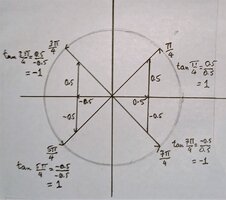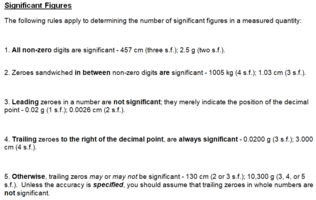I_Just_Want_To_Pass
New member
- Joined
- Apr 1, 2023
- Messages
- 2
I'm a bit stuck on this question: "Find the θ to 4 significant digits for 0 ≤ θ < 2π if tan θ = -0.7434".
I thought θ = -36.627 but that was less than 0 and goes against the inequality equation, I'm a bit stuck
I thought θ = -36.627 but that was less than 0 and goes against the inequality equation, I'm a bit stuck


